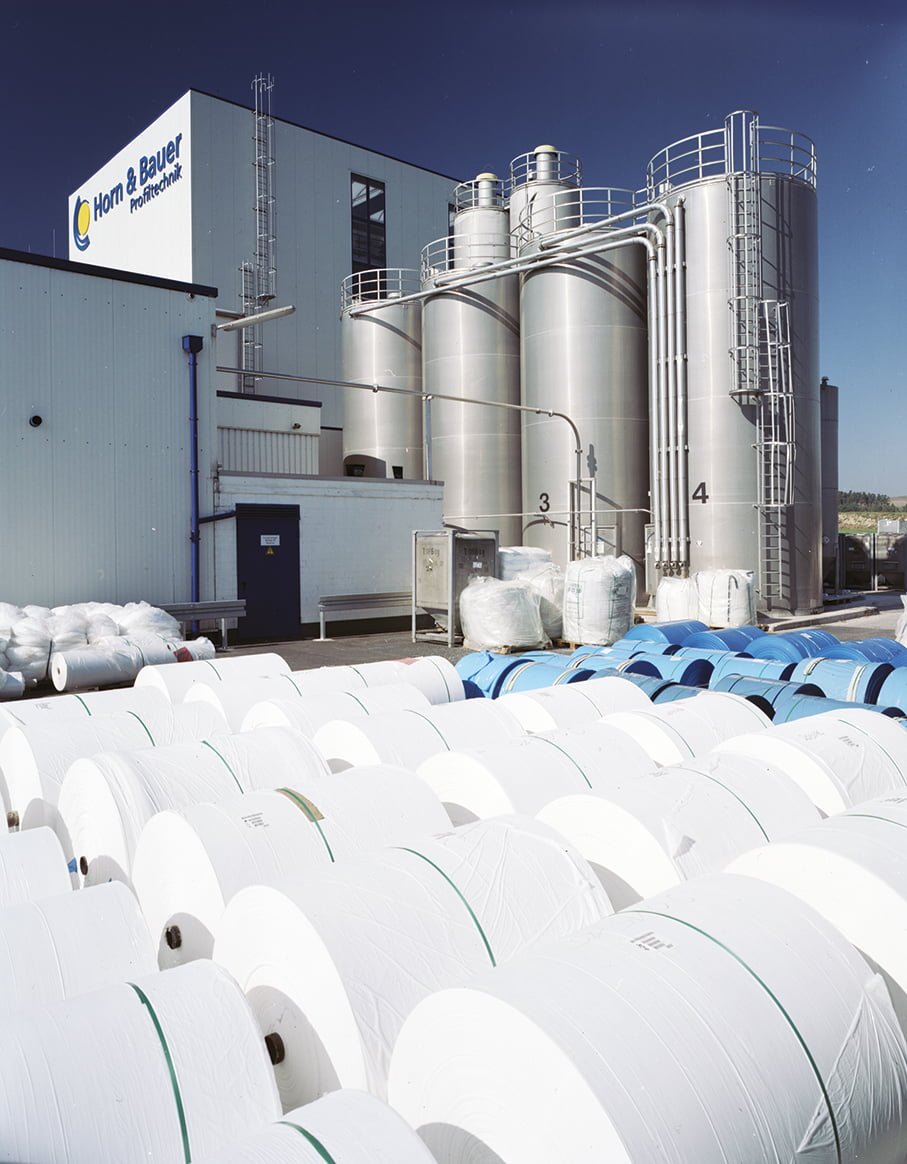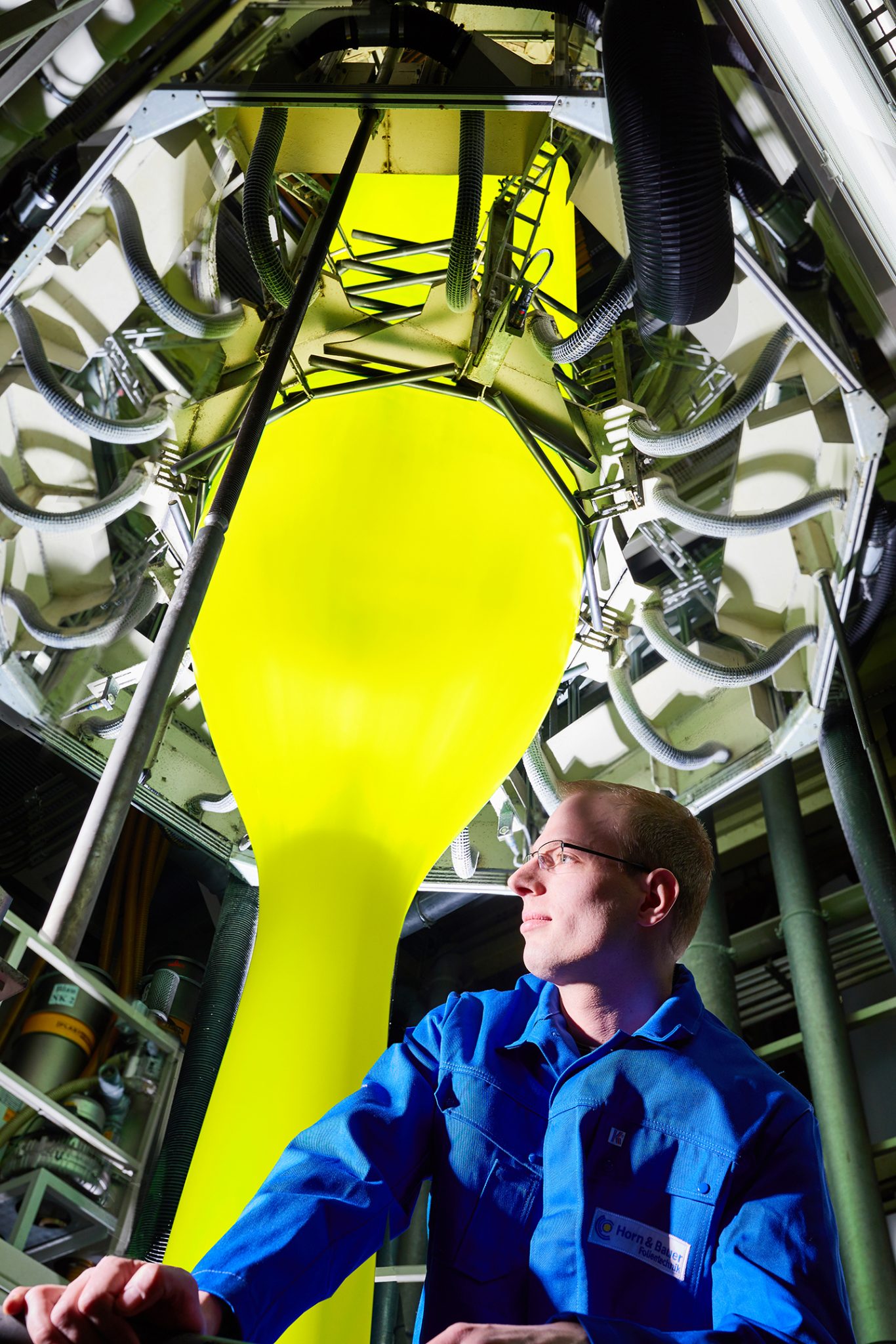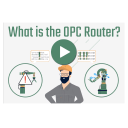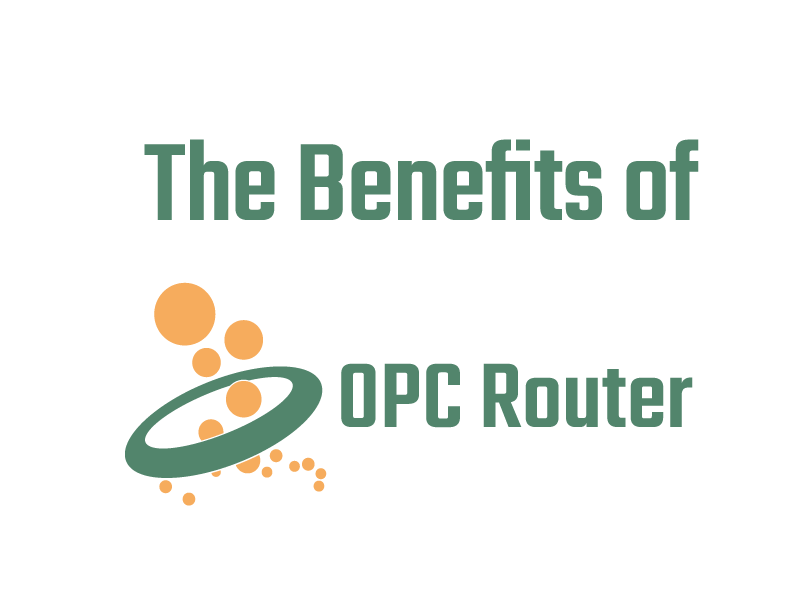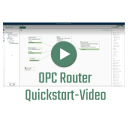Consolidation of machine- and energy-data in one system
Especially for energy-intensive productions, it is essential to know the consumption of the equipment and the resulting costs exactly. If energy consumption is a central cost factor, it is important to optimize the application and equipment. A family-owned company specializing in the production and finishing of plastic foils for a wide range of industries has combined the collection of data from machine control and energy consumption in one system within the framework of Industry 4.0. Now it benefits from a detailed overview of production. On this data basis, valid decisions can be made.
Founded in 1924, Horn & Bauer Group is a leading specialist in producing and finishing plastic films for protection and packaging solutions. The medium-sized corporate group has around 400 employees at three locations in Germany, as well as plants in Spain, France and England. It manufactures industrial films and packaging, technical films, consumer packaging and vehicle protection systems. Thereby are serverd branches like chemistry, medicine, technology, mechanical engineering, electrical engineering and food.
Machine communication by industry 4.0 technologies
Optimizing the demand for energy
In order to position the plant-intensive company for the future, processes are being established and improved within the framework of Industry 4.0-technologies. After a production data acquisition, the goal was therefore to be able to extract even more data from the machines in order to optimize the utilization of the plants. Energy requirements in particular are a key cost factor for the Group: plastic granulate is heated, inflated and expanded by an extruder, among other things, to produce the films. Energy consumption varies depending on the raw material and speed. It should be documented, monitored and evaluated.
For a long time, all available data was transferred from production to SAP ERP, which was not useful within the processes. Although it was possible to analyze the system functionality, for example, whether target times and actual times of an order matched. But not to the desired extent. In addition, two separate systems were in use for recording energy and machine data, which caused additional costs and transparency problems.
Machine connection from one source
The company became aware of inray Industriesoftware GmbH through its service providers for production data acquisition and SAP, who had worked with inray and made good experiences. Horn & Bauer looked for various solutions – the decision was finally made in favor of inray. “With inray we have merged everything. Now, with the connection to the machines and sensors, we have everything from one source” says IT team leader Matthias Schmidt.
It was important for the company to be able to record and visualize data historically. Now, they can be filed with the corresponding order and kept as documentation and proof. The job status is always transparent and the precise data from the sensors also provide information about the condition of machines. Production can be optimized based on this information: If it is detected that a machine is approaching the limit values, it is possible to intervene with predictive maintenance. Horn & Bauer thus finds out the optimum machine parameters for the respective production.
Detailed overview of the production
This is mainly possible thanks to the additional data that can now be collected: Time, malfunctions, haul-off speed, production in linear meters or thickness profiles are combined. At the same time, energy consumption is displayed, giving employees a more comprehensive picture of production. With the available data, the production process can be optimized and energy costs reduced. As an energy-intensive company, every energy saving is important for Horn & Bauer.
Conclusions can already be drawn from the data history: If different energy consumption levels are detected during the production of the same product, it indicates a defect in the machine. In addition, experience has also shown that higher power consumption indicates that a machine requires maintenance.
Implementation within three months
About one year ago, the implementation of three tools from inray, the communication between the plants, the ERP and the energy management was started. Since the beginning of 2019, the systems have been live at three locations in Germany. At the headquarters in Schwalmstadt, the OPC Server from Kepware takes care of machine communication: The OPC Router middleware establishes communication between Kepware, SAP and SQL. The FAS (Factory Application Server, developed further as cloud platform manubes) is used for energy management, energy data acquisition and its storage.
Kepware and OPC Router are also used at the locations Wümbach and Dinkelsbühl. For machine connection, the OPC Router gets data from Kepware OPC Server, prepares and transfers it to SAP via SAP interfaces. In total, 50 machines were connected in this way.
Remove stumbling blocks from the way
The implementation brought some stumbling blocks that had to be removed. For example, there were difficulties in measuring energy consumption. It turned out that there were conflicts with the devices and inaccuracies in the values because too many data were read at once.
In the case of M-Bus control, for example, the transmission speed has to be known in order to obtain correct values. inray provided the necessary assistance via hotline to solve the problems and support the IT team, which was not specialized in machine connection and control.
Standardized connection and detailed visualization
Web-based visualization of the system
Thanks to the standardization of the connection, the machines can now be networked faster and with considerably less effort: Via OPC Router it is possible to connect the various plant systems, controls and protocols with each other and to establish simple, standardized and certified communication with SAP. Especially in past times connection of the different devices from different manufacturers and corresponding controls proved to be tedious and complex.
The big advantage of the system is the visualization. Since the technology of inray is based on HTML5, the prepared information can be displayed anywhere via web browser in production or on a PC. Thanks to the web-based interface, it is also much easier to pass on the information to those responsible or to decision-makers, and the design is much more flexible. All responsible persons have access to the information in the intranet.
Central data storage in one system
Kepware also provides a unified query structure, eliminating the need to navigate multiple vendor systems. Data sources are known and accessible with just a few clicks. Centralized data storage also means that the information can be evaluated more uniformly. Previously, data from different systems had to be downloaded and interfaces had to be created before the summary. Now all of them are consolidated in one system. The machine data connection and energy data acquisition were also merged into one system in accordance with the strategy of the film specialist.
The FAS model for energy recording has also proven itself. The initial solution was licensed on a variable basis, but with FAS the number of sensors is no longer a factor, so Horn & Bauer can evaluate more measuring points for the same money.
Overall, inray solutions run more stable than the system previously used. Its logic was not always transparent and therefore difficult to check.
“We are very satisfied with the product and will be able to work well with this solution in the future,” Schmidt sums up.
Conclusion
Thanks to the standardized connection, machines and other systems from different manufacturers with different communication protocols can be networked easily and quickly. The web-based visualization allows data to be displayed wherever it is needed. Thanks to the consolidation of data from machine control and energy consumption in one system and the greater level of detail, the information is now available in a uniform format, allowing precise conclusions to be drawn and production to be optimized in the future.
More information
OPC Router works as an universal translator for your systems. It enables the communication
of all existing systems and protocols and can help modernize processes in the long term. Our video explains how OPC Router works, how it can be integrated into your system environment and what advantages it offers your company.
OPC Router is multifunctional and very easy to use. Connections are created simply by drag & drop and numerous Plug-ins enable the connection of a wide variety of applications and systems. Read more details about the advantages of OPC Router and how you can achieve an automated data exchange and thus the optimization of your processes.
Getting started with OPC Router is easy and can be done quickly. Our video shows you which elements are important and how you can connect different automation systems via drag & drop with suitable Plug-ins.
Run a free test now!
Get your personal link to the most recent OPC Router version and sign up for product news.

